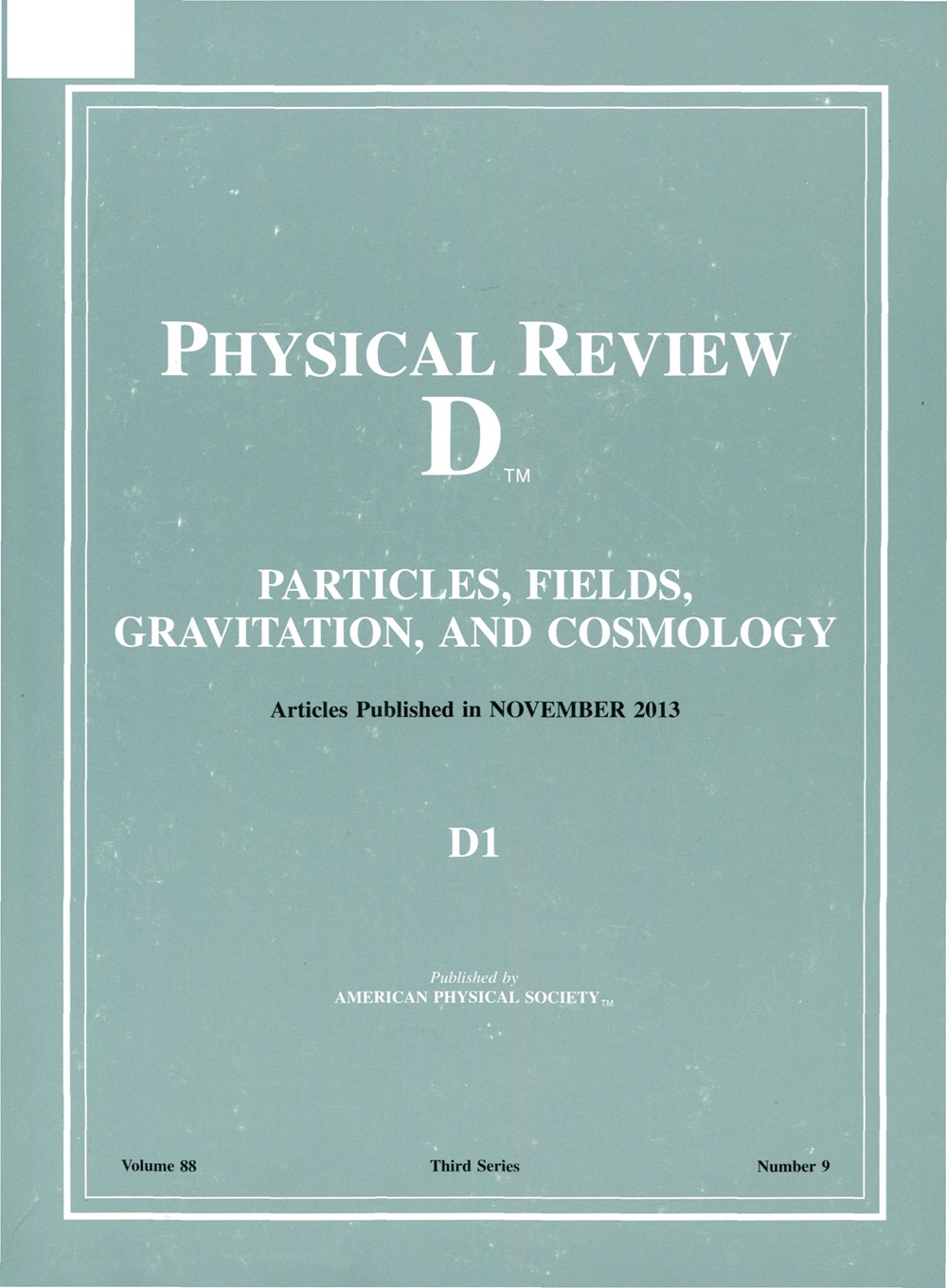从熵最大化看黑洞
IF 5.3
2区 物理与天体物理
Q1 Physics and Astronomy
引用次数: 0
摘要
由(局部)全息术和热力学驱动的黑洞的一个量子特征是,它使给定表面积的热力学熵最大化。在量子引力的背景下,这可能比经典的视界描述更基本。作为一个步骤,我们通过求解具有许多物质场的四维半经典爱因斯坦方程来探索这种可能性。对于高激发球对称静态组态,应用局部典型性,估计包含自引力的熵,推导出其上界。饱和条件唯一地决定了熵最大化态:自引力量子凝聚成无视界的径向均匀致密态,自引力与曲率诱导的大量子压力平衡,不出现奇点。内部度规是普朗克常数的自洽非摄动解。由熵密度的体积积分给出的最大熵,通过自引力与贝肯斯坦-霍金公式一致,推导出热力学熵的布索界。最后,讨论了10个未来的前景,导致一种推测的观点,即该配置代表了半经典方式的量子引力凝聚。2025年由美国物理学会出版本文章由计算机程序翻译,如有差异,请以英文原文为准。
Black hole from entropy maximization
One quantum characterization of a black hole motivated by (local) holography and thermodynamics is that it maximizes thermodynamic entropy for a given surface area. In the context of quantum gravity, this could be more fundamental than the classical characterization by a horizon. As a step, we explore this possibility by solving the 4D semiclassical Einstein equation with many matter fields. For highly excited spherically symmetric static configurations, we apply local typicality and estimate the entropy including self-gravity to derive its upper bound. The saturation condition uniquely determines the entropy-maximized configuration: self-gravitating quanta condensate into a radially uniform dense configuration with no horizon, where the self-gravity and a large quantum pressure induced by the curvatures are balanced and no singularity appears. The interior metric is a self-consistent and nonperturbative solution in Planck’s constant. The maximum entropy, given by the volume integral of the entropy density, agrees with the Bekenstein-Hawking formula through self-gravity, deriving the Bousso bound for thermodynamic entropy. Finally, 10 future prospects are discussed, leading to a speculative view that the configuration represents a quantum-gravitational condensate in a semiclassical manner. Published by the American Physical Society 2025
求助全文
通过发布文献求助,成功后即可免费获取论文全文。
去求助
来源期刊

Physical Review D
物理-天文与天体物理
CiteScore
9.20
自引率
36.00%
发文量
0
审稿时长
2 months
期刊介绍:
Physical Review D (PRD) is a leading journal in elementary particle physics, field theory, gravitation, and cosmology and is one of the top-cited journals in high-energy physics.
PRD covers experimental and theoretical results in all aspects of particle physics, field theory, gravitation and cosmology, including:
Particle physics experiments,
Electroweak interactions,
Strong interactions,
Lattice field theories, lattice QCD,
Beyond the standard model physics,
Phenomenological aspects of field theory, general methods,
Gravity, cosmology, cosmic rays,
Astrophysics and astroparticle physics,
General relativity,
Formal aspects of field theory, field theory in curved space,
String theory, quantum gravity, gauge/gravity duality.
 求助内容:
求助内容: 应助结果提醒方式:
应助结果提醒方式:


